What toy train locomotive means the most to you?
My favorite Gilbert American Flyer S gauge locomotive is the No. K325 Hudson steamer from 1952. It is a most impressive, accurate, and interesting model of the J class steam locomotives, commonly associated with the New York Central Railroad.
The K325 is (along with the K335 Northern) the first Gilbert locomotive to feature a fully functional knuckle coupler on the tender’s rear. What’s more, it was the first locomotive to have illuminated (a.k.a. “glowing”) smoke.
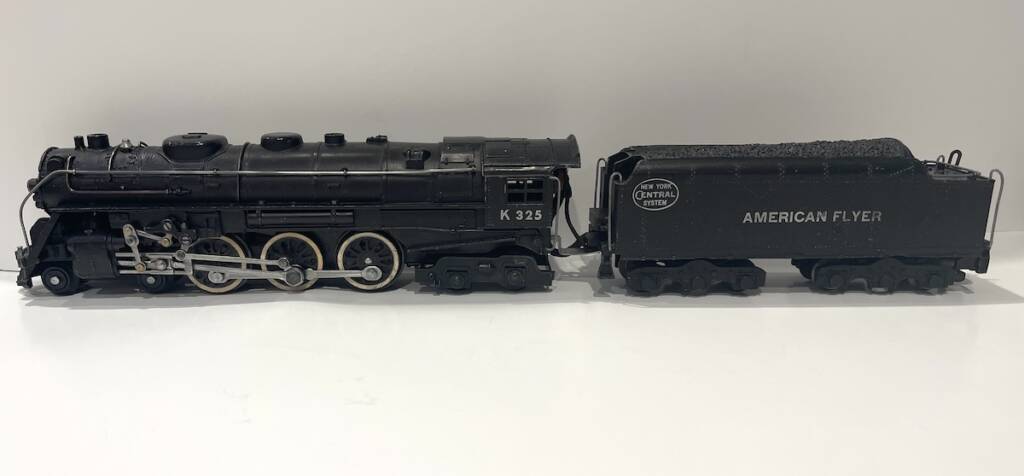
The earliest of the K325 Hudsons, a one-year-only manufacture, included a knuckle coupler, attached to the rear tender truck with a rivet, as part of set No. K5206W. The other knuckle coupler set that year was K5210W, headed by the aforementioned K335 Northern. Research indicates only the Hudson set featured the early style tender coupler. Later 1952 versions of the K325 were made with the same, more familiar, later style couplers as the K335.
Gilbert achieved the lighted smoke effect by placing a clear plastic tube in the smoke stack in place of the usual brass unit. Light from the working headlight bulb underneath would shine upward through the stack and illuminate the smoke as it exited. As is the case with many Gilbert American Flyer steam locomotives, the smoke unit on my K325 blows impressive rings of smoke, which certainly enhance the lighted smoke effect.
Other notable features of the K325 are Flyer’s “choo-choo” sound (located in the boiler), an air chime whistle and reversing unit in the tender, and New York Central System herald contained within a small oval on the upper front corner of the tender sides. As with most other Flyer steam locomotives of the time, there is a metal bell, ample metal handrail detail, metal flagstaffs, die-cast trucks under the boiler cab and tender, and, of course, whitewalls on the driver wheels.
With regard to the die-cast tender trucks, the center axle of the six-wheel design was removed at the factory and replaced with sliding shoe contacts (one on each truck) in an effort to provide improved function of the whistle. The effectiveness of this effort is a matter of opinion or taste.
How did you acquire it and what makes it special?
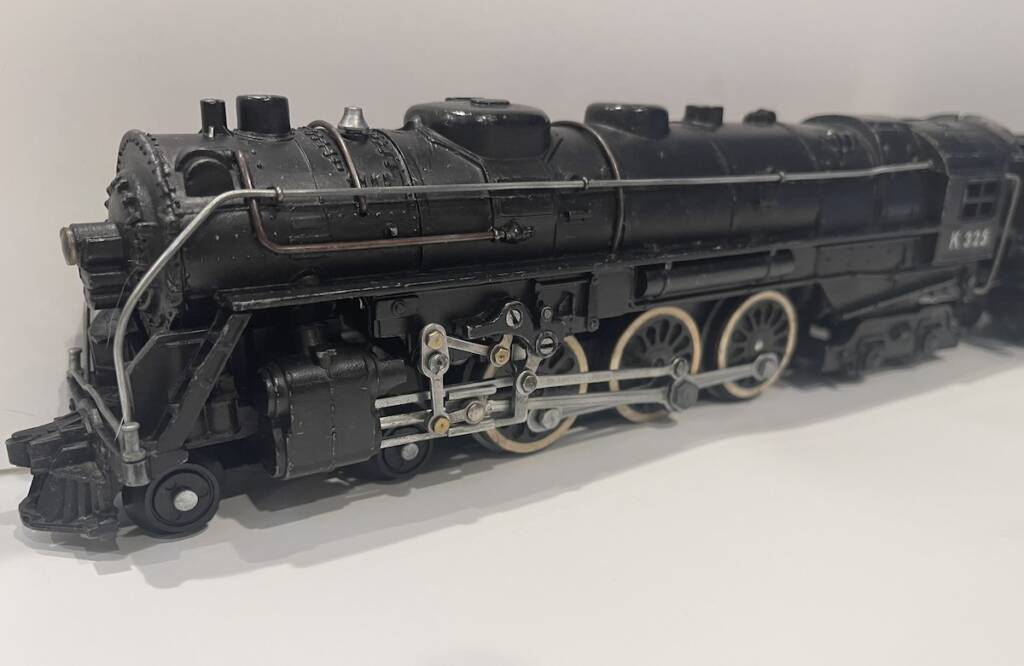
In addition to its “firsts” in the Flyer line, the K325 holds a special place in my collection because of how it was acquired.
The elegant Hudson came into my possession at an estate auction in nearby Parkersburg, W.V. The auctioneer’s assistant turned out to be my great aunt Tootie’s next door neighbor in Elkins, a historic railroad town a few hours to the east.
My great aunt’s name came from the fact that she enjoyed hearing the Western Maryland steam locomotives blowing their whistles when making stops at the station in Elkins and signaling at the various crossings and bridges.
This chance meeting also led to the acquisition of other Flyer pieces from my maternal family’s hometown as well as a Western Maryland coal shovel, rescued from underneath my great aunt’s home by this same gracious neighbor.
Like this series? Read more:
Lionel No. 41 switcher from Bob Keller
Lionel No. 225E 2-6-2 from John Huegel
Lionel No. 2256 Texas Special from Joe Algozzini
Lionel VisionLine Big Boy from Chris Montagna
MTH Premier Santa Fe No. 2926 from Lucas Iverson







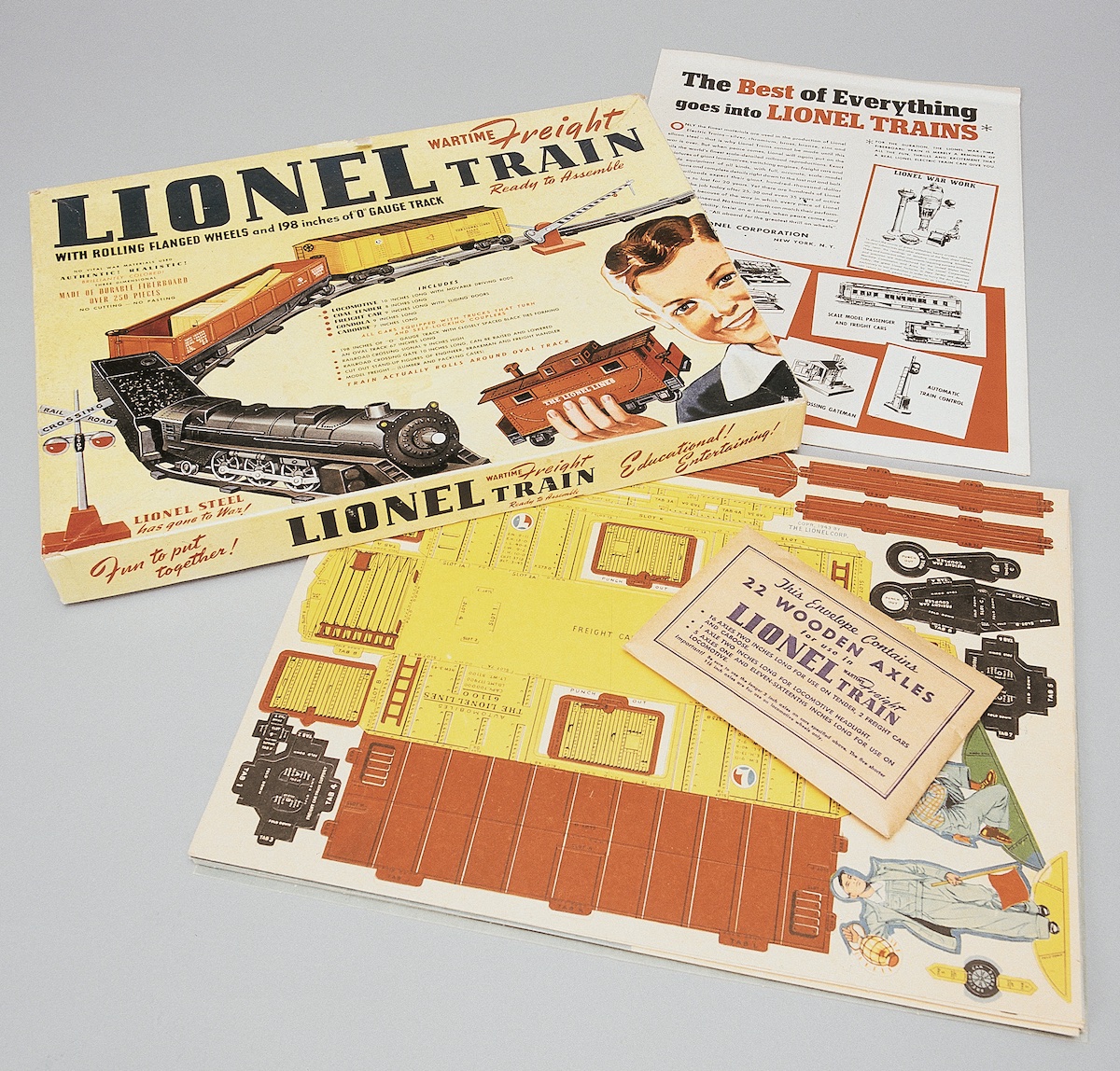


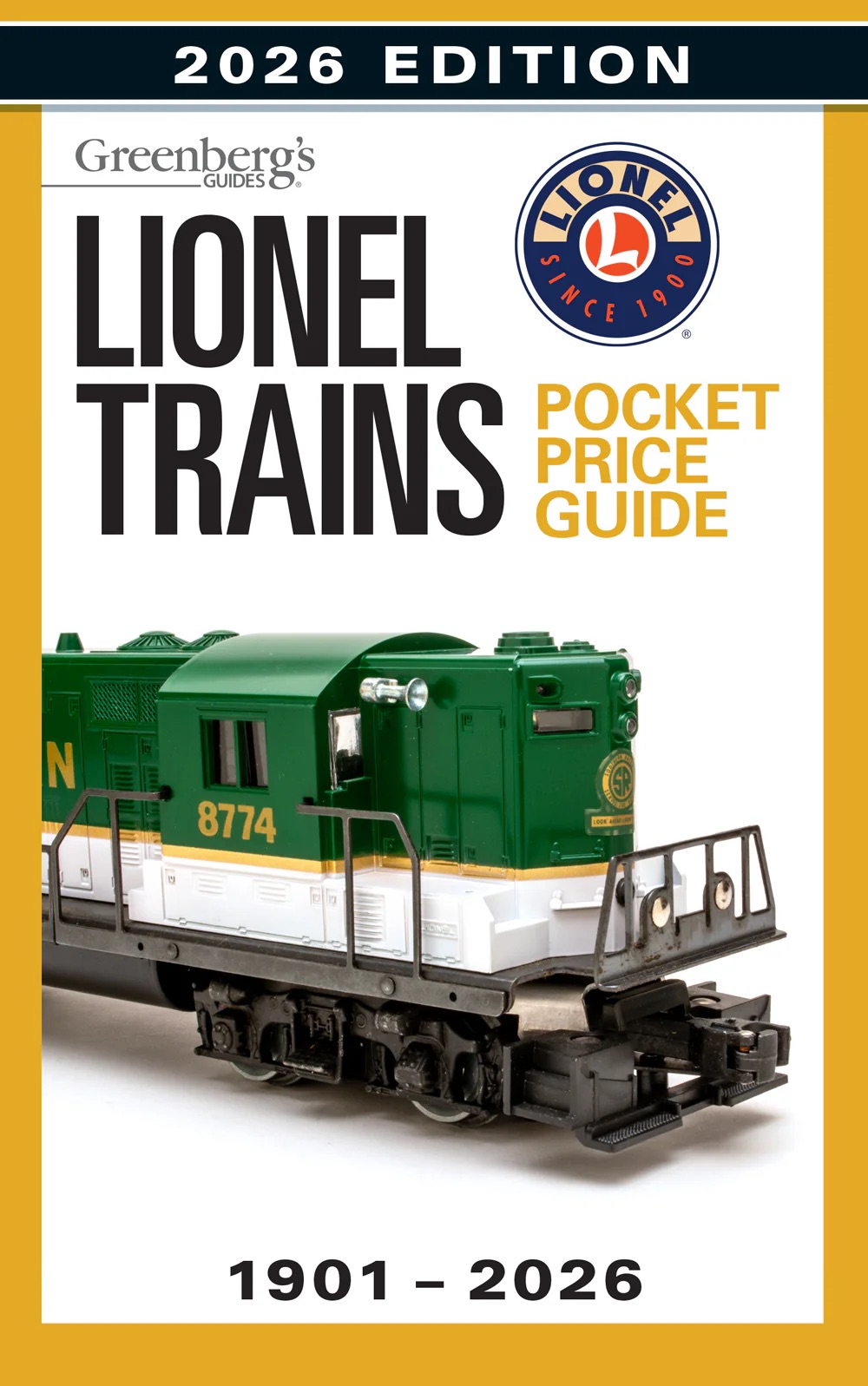
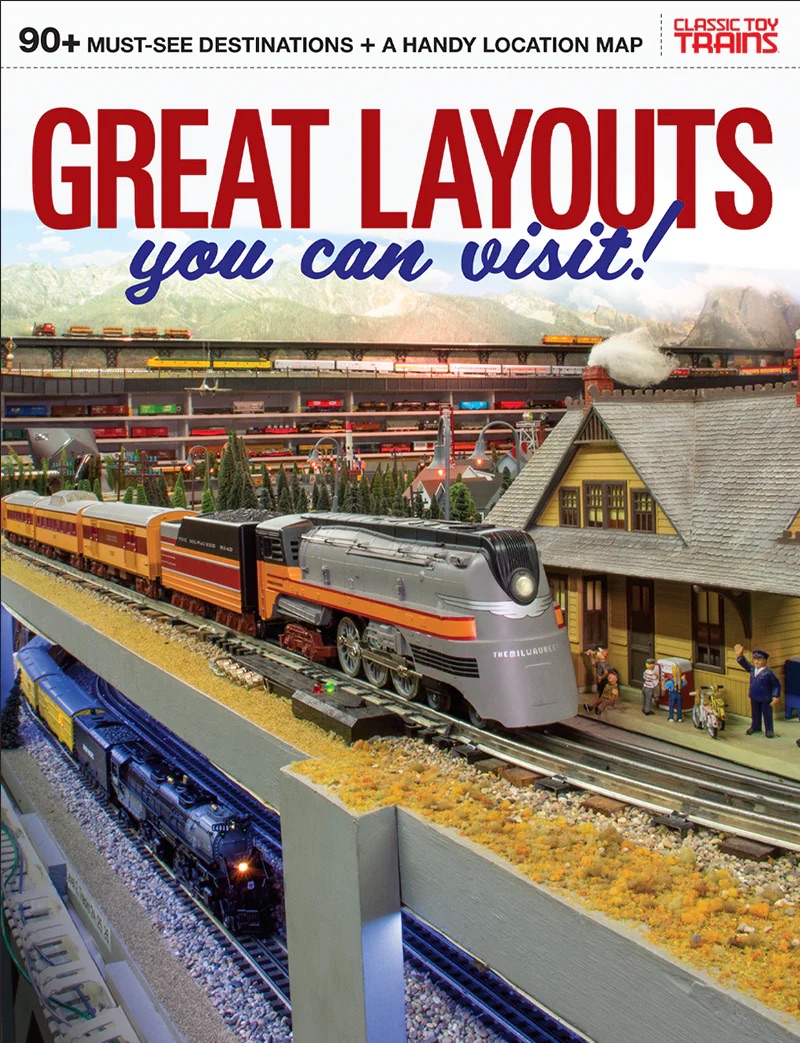
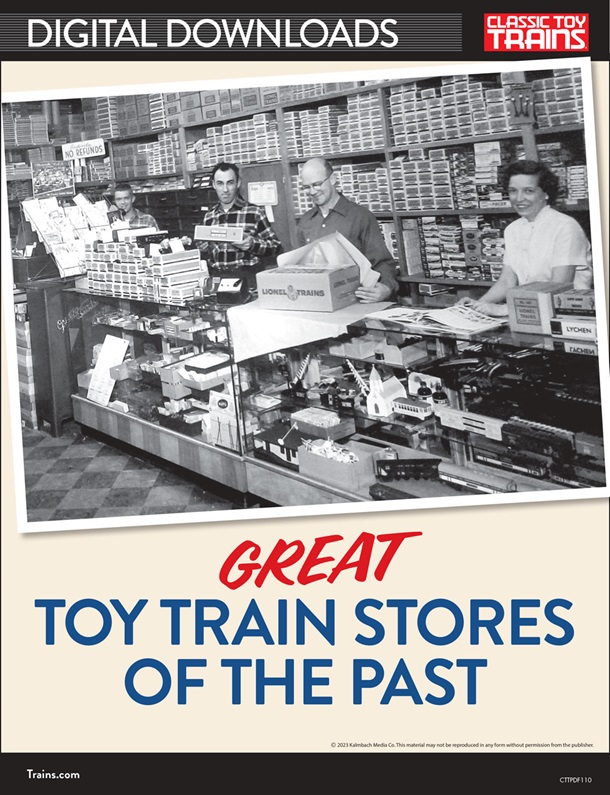
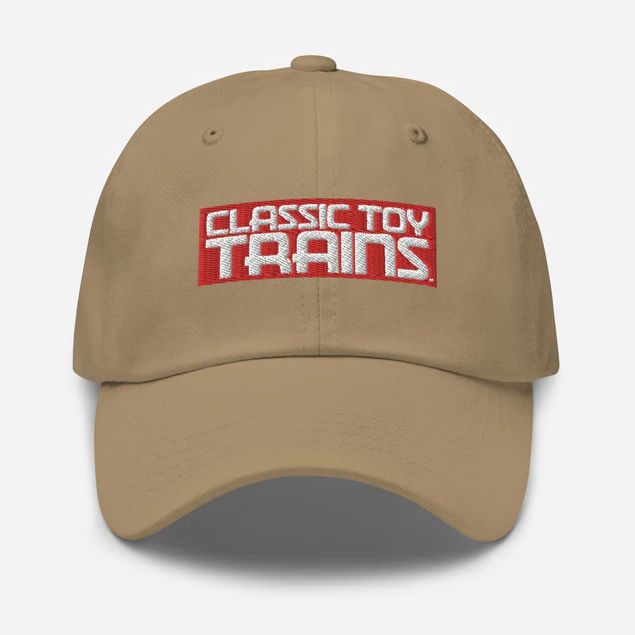
Is it haunted by the ghosts of the Blennerhasset?